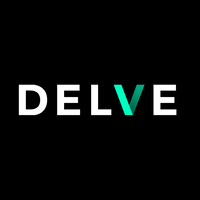 Remember viewability? It seems like only yesterday that it was the digital ad industry’s cause de guerre. After all, what good is an ad if it can’t be seen by the consumer. Ads that are served “below the fold,” or that fail to load sufficient pixels to be read and understood, have no chance to influence consumers purchasing decisions.
Remember viewability? It seems like only yesterday that it was the digital ad industry’s cause de guerre. After all, what good is an ad if it can’t be seen by the consumer. Ads that are served “below the fold,” or that fail to load sufficient pixels to be read and understood, have no chance to influence consumers purchasing decisions.
In 2015 wave-making CMOs like P&G’s Marc Pritchard and Unilever’s Keith Weed dominated the conversation with public calls for digital to clean up its act and provide guarantees that digital inventory would be viewable. As late as 2017 media buying heavy-hitters like Group M were pushing for more stringent viewability standards. More recently, it seems that the conversation around viewability has died down. So what happened? Did all the ads suddenly become viewable?
Also Read: Keeping up with Everyone’s Insatiable Appetite for Visual Content
The answer, unfortunately, is both yes and no. One reason that viewability has fallen off the radar of industry thought leaders and marketing trades is that we have made some progress. It was once considered standard to assume that anywhere from 30-50% of a digital ad buy would be wasted on non-viewable impressions. This type of waste was seen as the cost of doing business, at scale, in an unruly digital environment.
Today, through the combined efforts of technology providers and major platforms, as well as pressure from industry leaders willing to back up their tough talk with reduced ad budgets, the baseline conditions of viewability have improved. While some advertisers still expect only 60% of their impressions to be in-view, it is now possible to push those numbers as high as 95% by employing smart buying strategies and verification technology. The cost of viewability is high, but greater viewability is possible.
Also Read: People-Based Marketing: 5 Ways to Win
Things are getting better for viewability, but that still leaves a lot of ads unseen, so why has the industry conversation quieted down? Another factor driving the shift in focus is the rise of competing topics that impact media quality. In late 2017, P&G’s Marc Pritchard decreed that brand safety, not viewability, would be the key issue of 2018. After a year that featured wildly unpredictable news cycles, the spread of hate speech on social media, a wave of politically charged brand boycotts, and the continued rise of fake news it’s no surprise that brand safety has sucked up a lot of oxygen in the conversation about digital advertising. I get it, sometimes it’s sexier to talk about avoiding fake headlines and inflammatory content than to deal with the dirty details of how many pixels of your ad are in-view and for how long. But viewability is still a critical issue that’s causing smart marketers to waste valuable dollars and we can’t take our foot off the gas.
Also Read: Why Millennials Gravitate Towards Minimalistic Branding
Most of the progress that’s already been made on the challenge of viewability was the result of collective action on the part of the digital advertising industry. The push to improve viewability standards came from marketing leaders at major brands who adjusted their spend to prioritize viewable inventory. It also came from major media buyers setting new standards that forced the industry to produce higher quality inventory, from publishers who optimized their sites to deliver that inventory, and from technology partners who helped marketers to identify and target in-view impressions.
The cumulative impact of this action was improved viewability conditions for all. However, that work isn’t done yet. Desktop viewability has improved dramatically, but there is still work to be done in mobile and video to ensure that these emerging channels provide value for marketers without wasting their money. Organizations like the MRC can continue to push for high standards of viewability across all channels and marketers can continue to prioritize those demands with their dollars. The outcome of continuing the conversation around viewability can and should be 100% viewable inventory, across all channels, for all.
Also Read: A Beginners Guide to Positioning a Strong Online Brand











